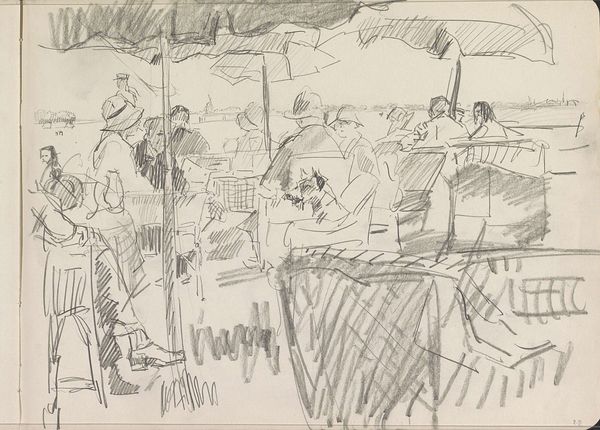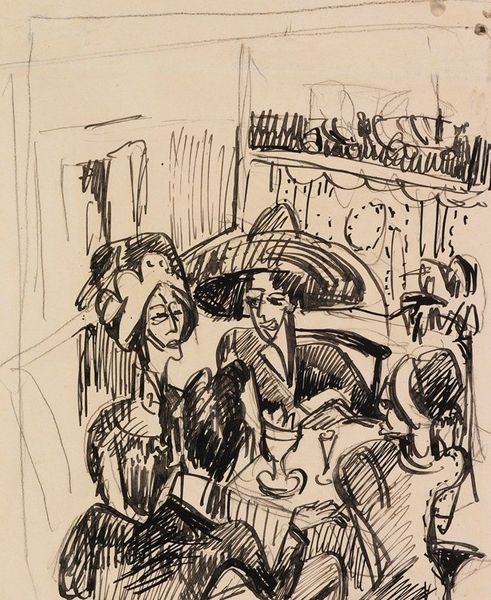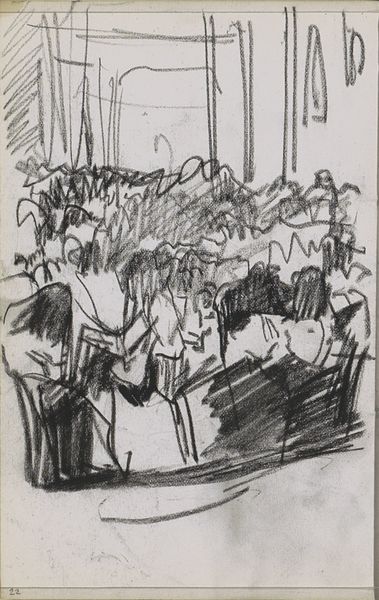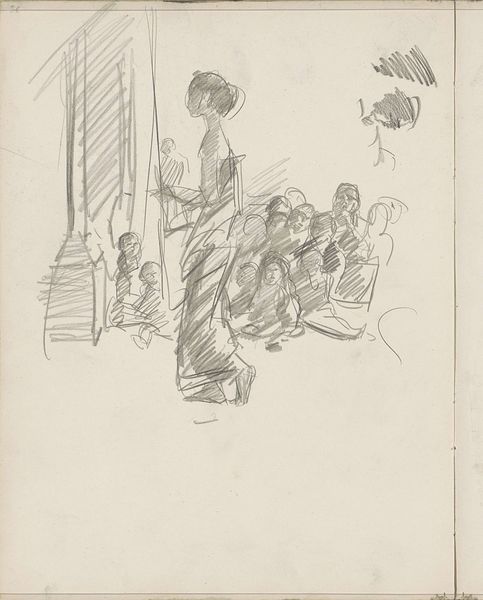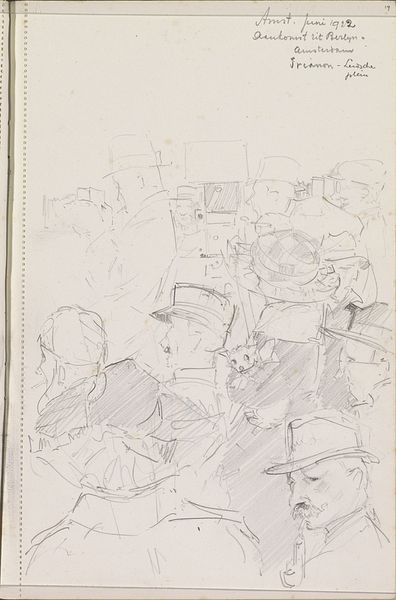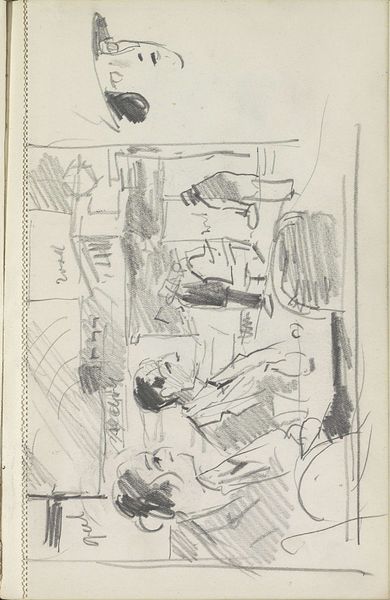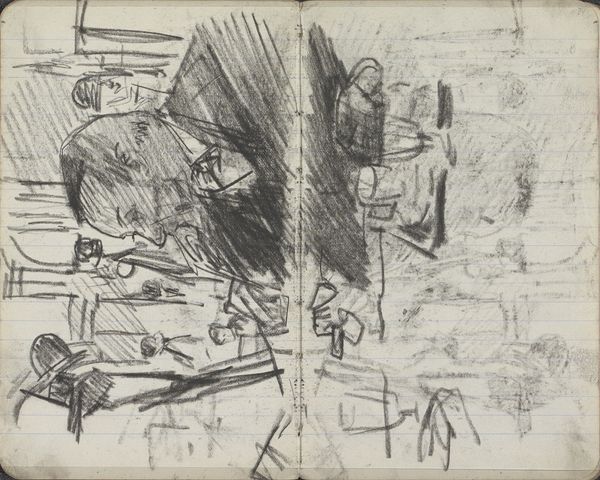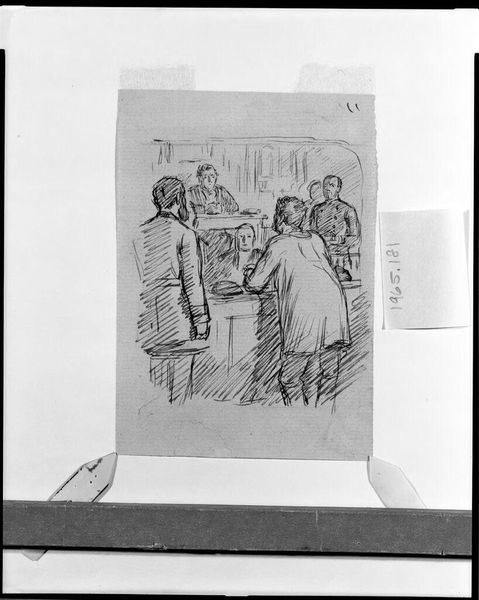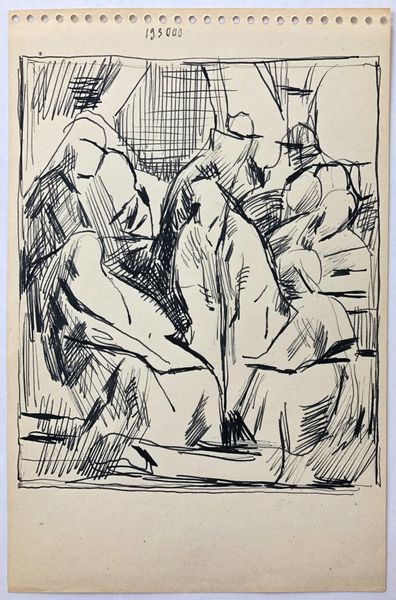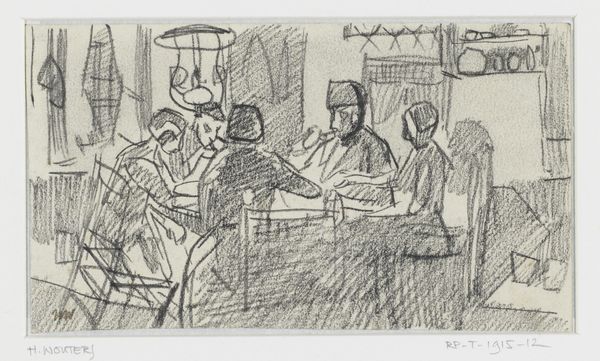
Copyright: Rijks Museum: Open Domain
Editor: This pencil drawing, "Figuren, mogelijk in een etablissement," or "Figures, possibly in an establishment," by Isaac Israels, created sometime between 1875 and 1934, has a very fleeting, almost ghostly quality to it. The figures seem to emerge from the shadows. What catches your eye, and how do you interpret this scene? Curator: It is a glimpse into the social fabric of its time. Israels, deeply connected to the pulse of modern life, captures not just figures but an atmosphere, wouldn't you agree? This "establishment," potentially a café or theater, speaks volumes about public life in the late 19th and early 20th centuries. Consider the Impressionistic style – the sketch-like quality. Does that seem appropriate, reflecting a rapidly changing world, an increasingly urbanized society where leisure became more visible? Editor: I see what you mean! It's not just a group of people, it's about the emergence of public spaces. The speed of the lines almost feels like capturing a fleeting moment in a growing city. Curator: Precisely! Israels's impressionistic approach serves a greater socio-political purpose. It documents how the public sphere was evolving, who had access to it, and the very experience of modern life. Are they enjoying new freedoms? What tensions might they also face? The lack of precise details lets viewers project their own understandings of the era's social dynamics onto the work. What do *you* make of the blurred edges? Editor: I initially saw the loose lines as a lack of definition, but it makes the figures more universal, as if it could be *any* group of people. It could represent broader changes, right? Curator: Absolutely! The sketch doesn't tell us exactly who they are; instead, it gestures to social transformation visible within these establishments. This artwork invites conversations about urban leisure, class, and societal evolution. How would you say this affects how you appreciate the artwork now? Editor: I realize it's not just an image but a historical record that asks us to think critically about the public spaces we now occupy. Thanks for bringing that perspective! Curator: My pleasure! I hope it prompts us to delve even deeper into Israels' art.
Comments
No comments
Be the first to comment and join the conversation on the ultimate creative platform.
